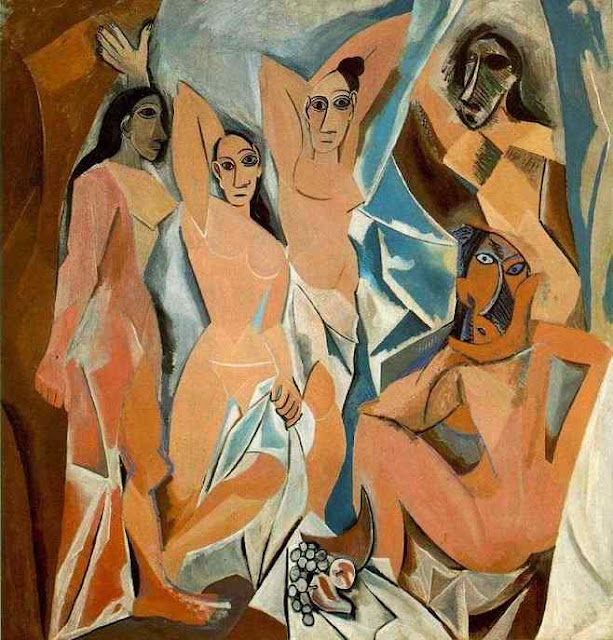Les Demoiselles d’Avignon, Master’s masterpiece
The first truly Modernist painting (though the change had been in the air for some time), the radical break constituted by Pablo Picasso 1907’s study of a Barcelona brothel, Les Demoiselles d’Avignon, led to Cubism and sharply divided critics.
Never before or after did, Picasso spend so long on one painting as Les Demoiselles, drawing hundreds of preparatory sketches over a period of nine months. The innovation doesn’t lie with the content; the courtesan had long been a covert subject of Western Art before being explicitly identified as a prostitute by Edouard Manet’s Olympia, to becoming somewhat of a Bohemian cliche by the time of Toulouse-Lautrec in the 1890’s. Picasso’s claim of blazing, revolutionary originality lies in the form. First of all, he throws five hundred years of accepted practice out of the window by abolishing perspective, then instead of the traditional curves we have the harsh angular, geometric poses of the women. Picasso signifies his reaching back in time and across continents with the Iberian mask (the figure on the far left) and the African masks (the two figures on the right) which lend a further disconcerting effect to an already confrontational, provocative painting. The bowl of fruit surrounded by the women seems ripe for Freudian interpretation, just one of many that the painting has been subjected to, including formal, feminist and esoteric.
Although at first Picasso only showed the painting to friends and fellow artists in his (quite extensive) immediate circle, it had a galvanizing effect. George Braque further developed Cubism as a response to Les Demoiselles and it intensified the rivalry between Picasso and Matisse, who realized that the Spaniard had wrestled the crown of Modern Art from him with this incendiary work, never again to be relinquished. Andre Breton, who for all his flaws had a very keen eye for art recognized in Les Demoiselles d’Avignon the definitive Modernist masterpiece, a harbinger of the violent, revolutionary menace of the unconscious and he arranged for its first publication in Europe in La Révolution surréaliste.

Comments
Post a Comment